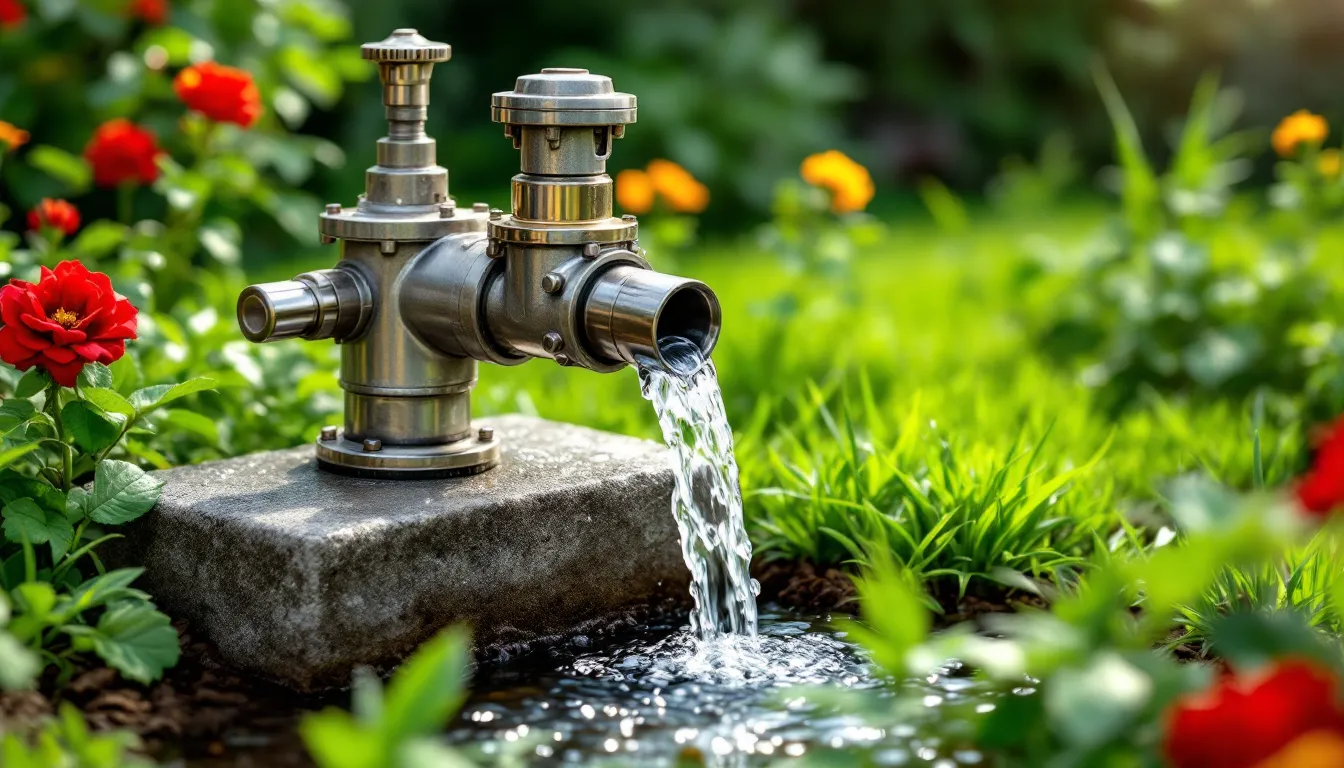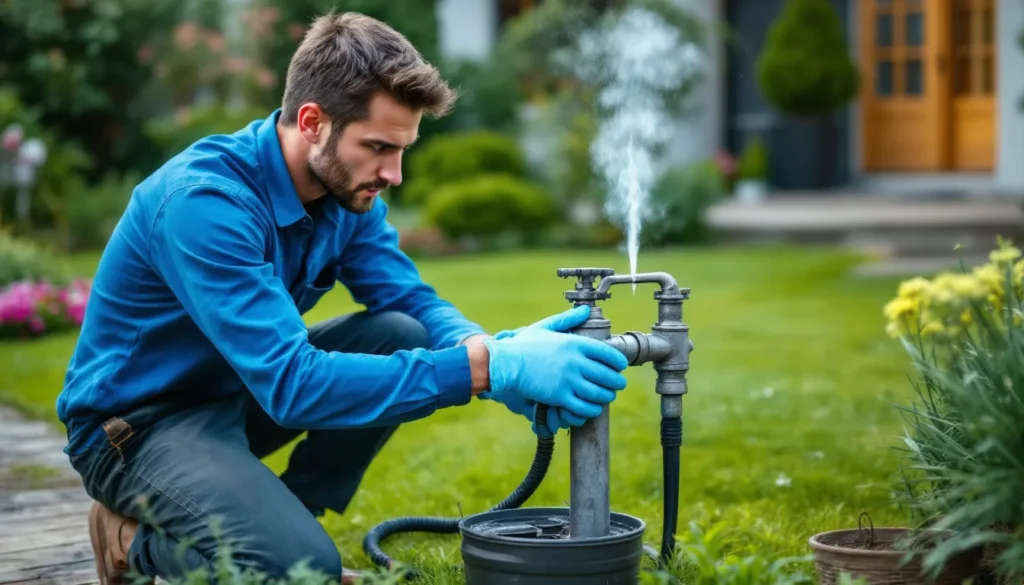Key Takeaways
- Importance of Priming: Priming a water pump is crucial for preventing damage, ensuring efficient water flow, and facilitating quick start-up.
- Consequences of Not Priming: Failing to prime can lead to overheating, inefficient operation, higher energy costs, and potential system failures.
- Steps to Prime a Pump: The process involves turning off power, filling the pump with water, and ensuring proper ventilation by opening air vents.
- Common Priming Issues: Be aware of problems such as air lock and inadequate water supply, which can hinder effective priming.
- Maintenance Tips: Regularly inspect and maintain your pump, checking for leaks, cleaning components, and lubricating moving parts to enhance performance.
- Understanding Pump Types: Knowing the different types of pumps (centrifugal, positive displacement, submersible, jet) and their functions can aid in selecting the right one for your needs.
If you’re dealing with a water pump, knowing how to prime it is essential for optimal performance. Priming ensures that your pump can draw water effectively, preventing damage and ensuring a steady flow. Whether you’re using it for irrigation, a pool, or household needs, understanding this process can save you time and frustration.
Understanding Water Pumps
Water pumps are essential devices that move water from one location to another. They play a crucial role in systems such as irrigation, aquariums, and residential plumbing. Familiarity with the types and functions of water pumps helps you choose the right one for your needs.
Types of Water Pumps
- Centrifugal Pumps
Centrifugal pumps use rotational energy to move water. They are ideal for low-viscosity fluids and applications requiring high flow rates.
- Positive Displacement Pumps
Positive displacement pumps move water by trapping a fixed amount and forcing it into the discharge pipe. These pumps work well for high-viscosity fluids and high-pressure applications.
- Submersible Pumps
Submersible pumps operate underwater. They are commonly used in wells, drainage systems, and fountains.
- Jet Pumps
Jet pumps use air pressure to create suction, pulling water from a deep source. They are effective in well applications when combined with a deep-well injector.
Components of Water Pumps
- Impeller
The impeller spins within the pump casing and generates flow. Its design directly influences the pump’s efficiency and performance.
- Pump Shaft
The pump shaft connects to the motor, transferring rotational energy to the impeller.
- Diffuser
The diffuser slows the water flow, allowing pressure to increase before exiting the pump.
- Check Valve
A check valve prevents backflow, ensuring water only moves in one direction.
Factors Influencing Pump Selection
- Flow Rate
Determine your desired flow rate in gallons per minute (GPM) to match the pump’s capacity.
- Head Pressure
Calculate the total head pressure needed based on the vertical distance and friction loss in the system.
- Fluid Characteristics
Consider the fluid’s viscosity and temperature. Different pumps handle varying fluid types, influencing performance.
- Power Source
Identify the available power sources. Electric, gasoline, and solar pumps all serve specific applications.
Understanding these aspects of water pumps lays the groundwork for effective priming and operation. You enhance efficiency and reliability by selecting the appropriate pump for your needs.
Importance of Priming a Water Pump

Priming a water pump is vital for its efficient operation. It ensures that the pump successfully draws water, preventing potential damage and maintaining a steady flow.
Purpose of Priming
Priming serves multiple essential functions for your water pump.
- Avoids Cavitation: Priming eliminates air pockets to prevent cavitation, a damaging phenomenon where vapor bubbles form and collapse within the pump.
- Ensures Efficient Water Flow: Priming guarantees a continuous water supply, enhancing the pump’s overall efficiency and performance.
- Reduces Wear and Tear: A properly primed pump experiences less friction and stress, leading to a longer lifespan and reduced maintenance costs.
- Facilitates Faster Start-Up: Proper priming allows the pump to begin operation more quickly, saving time in critical situations such as irrigation or emergency draining.
Consequences of Not Priming
Failing to prime a water pump incurs several negative consequences.
- Increased Risk of Damage: Running a dry or unprimed pump can lead to overheating and permanent damage to internal components, like the impeller and seals.
- Inefficient Operation: An unprimed pump struggles to draw water, resulting in reduced flow rates and unreliable performance.
- Higher Energy Costs: An inefficient pump expends more energy, increasing operating costs over time.
- Potential System Failures: In critical applications like irrigation or drainage, skipping the priming process risks system failures, adversely affecting productivity.
Understanding the importance of priming ensures you maintain your water pump’s efficiency and reliability, safeguarding your investment and providing consistent performance.
Steps to Prime a Water Pump
Priming a water pump involves a few straightforward steps that ensure effective operation. Follow these detailed procedures for optimal results.
Preparing the Pump
- Turn off power to the water pump to ensure safety during the priming process.
- Inspect the pump and connections for any visible damage or leaks.
- Clear debris around the pump and intake area to prevent obstruction.
Filling the Pump with Water
- Remove the priming plug, if applicable, located on top of the pump.
- Pour water directly into the pump until it’s filled to the brim. This step eliminates air pockets.
- Reattach the priming plug securely to prevent water from spilling during operation.
Ensuring Proper Ventilation
- Open air vents on the pump or related piping systems, if present, to allow trapped air to escape.
- Observe water flow during the initial operation; bubbles indicate air not fully expelling.
- Keep an eye on pressure gauges to monitor water levels and adjust as necessary for consistent flow.
Common Issues When Priming
Priming a water pump can present several challenges. Being aware of these common issues helps ensure successful and smooth operation.
Air Lock Problems
Air lock occurs when air gets trapped within the pump system, preventing water from flowing properly. This situation leads to inefficient operation. To resolve air lock, ensure all air vents are open and purge air from the system by loosening fittings or using a manual method to remove trapped air. Consistently check for leaks, as they might introduce air into the system.
Inadequate Water Supply
Inadequate water supply can impede the priming process, causing delays or complete failure. Verify that the water source provides a consistent flow and is at an adequate level. Ensure the hose or intake line is submerged correctly and free from blockages. Inspect the inlet screen for debris that might restrict water flow. Addressing these issues promptly will enhance priming efficiency and overall pump performance.
Tips for Effective Pump Priming
Effective priming of your water pump ensures optimal function and longevity. Here are several tips to enhance your priming process.
Regular Maintenance
Perform regular maintenance on your water pump to ensure smooth operation. Check and clean all components, including filters and screens, to remove debris and buildup. Inspect seals and gaskets for wear and replace them as needed to maintain a tight seal. Lubricate moving parts according to the manufacturer’s instructions to prevent friction and extend the pump’s lifespan.
Checking for Leaks
Examine your water pump for any leaks before priming. Look closely at the joints, fittings, and hoses for signs of dripping or moisture. Address any leaks by tightening connections or replacing faulty parts. A leak not only decreases efficiency but can also inhibit proper priming, leading to air entering the system and affecting water flow.
Conclusion
Priming your water pump is vital for ensuring it operates efficiently and reliably. By following the outlined steps and tips, you can avoid common pitfalls and enhance the longevity of your pump. Regular maintenance and attention to detail will not only improve performance but also save you time and money in the long run.
Remember to keep an eye on potential issues like air locks and leaks. Addressing these proactively will help maintain a steady flow and prevent damage. With the right approach, you’ll enjoy the benefits of a well-functioning water pump, whether for irrigation, household use, or any other application. Take pride in your pump care, and you’ll reap the rewards of consistent performance.

Hi, I’m Md Rofiqul, a gardening enthusiast who loves spending time in the garden and backyard. I enjoy caring for plants, growing flowers and vegetables, and creating a green space that feels peaceful and refreshing. Gardening is more than just a hobby, it’s a passion that connects me to nature and brings joy to my daily life. Living with plants inspires me to embrace simplicity, patience, and sustainability while making every day more colorful and rewarding.
